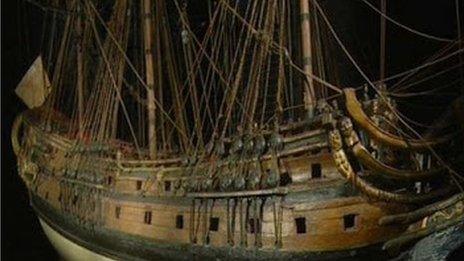The London shipwreck: 1665 gun carriage recovered
- Published
The gun carriage from The London, which exploded and sank in the Thames Estuary in 1665, weighs about a ton
A gun carriage has been recovered from the wreck of a warship which exploded and sank in the Thames estuary in 1665.
The London went down off Southend-on-Sea in Essex, killing 300 crew.
It is the first complete carriage to be raised from the ship, which is lying about 65ft (20m) below the surface.
The wooden mount, weighing about one ton, will be taken to the quay at Leigh-on-Sea. Historic England hopes it may provide clues as to why the ship sank.
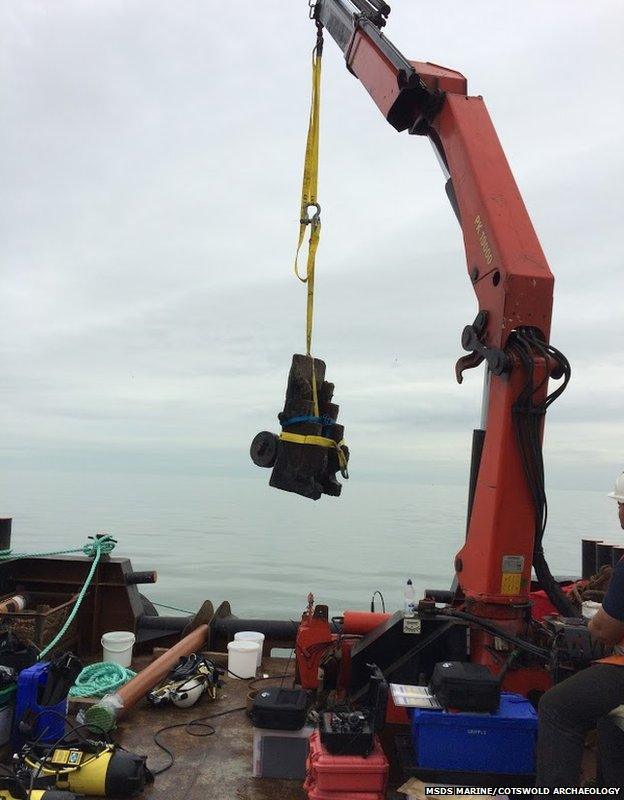
The carriage was lifted by a 20-ton crane barge called Jumbo

The gun carriage is the first complete one to be recovered from the wreck

A CGI reconstruction was created of The London as it probably looked before it was wrecked
Previous dives made by Historic England since 2014 have recovered parts of shoes, cabins, a sun dial and hand-made glass windows.
'Excavation by touch'
Five cannon from the 76-gun vessel were recovered before then. Two are with the Royal Armouries in Portsmouth and three are with a private collector in the USA.
Alison James, maritime archaeologist with Historic England, said: "Each carriage was made specifically for each gun, so we may be able to fit one of these five guns to it.
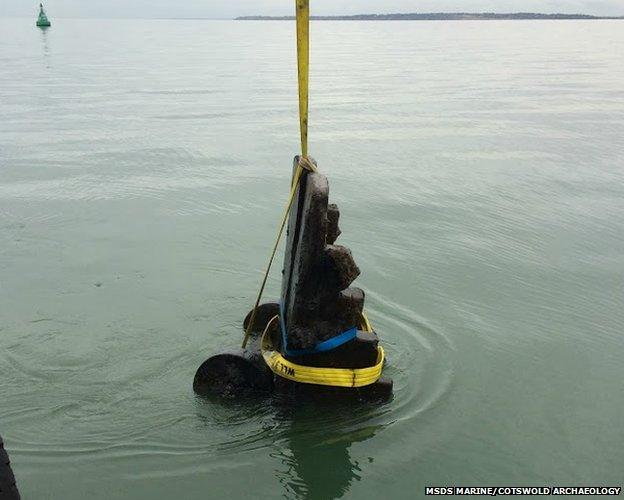
It took 30 minutes to winch the carriage to the surface after three months of planning
"We don't know if the carriage will be able to shed light on the explosion, but it's part of the wider excavation which we hope will explain it.
"The excavation is all done by touch because divers can usually see only 20cm [8ins] in front of them, so it's hard to see what is down there."
The carriage was lifted by a crane boat in about 30 minutes, but months of preparation had gone into the operation.
The ship, which was on its way to fight the Dutch, is resting on the sea bed in two main parts mainly covered in silt, or "Thames mud" as Ms James called it.
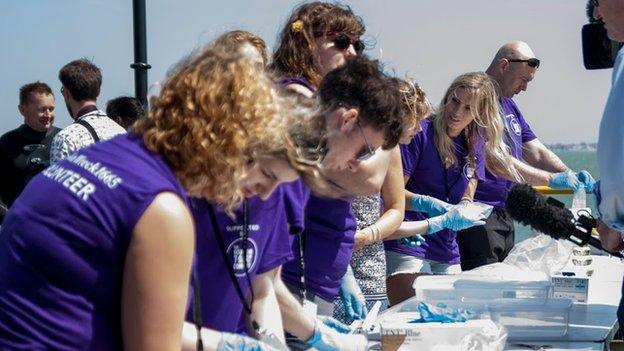
Volunteer archaeologists sifted through other items recovered from the wreck of The London
The finds are expected to go on permanent display at Southend-on-Sea Borough Council's Museums Service.
- Published13 September 2014
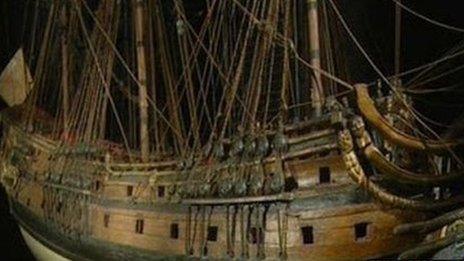
- Published24 July 2014
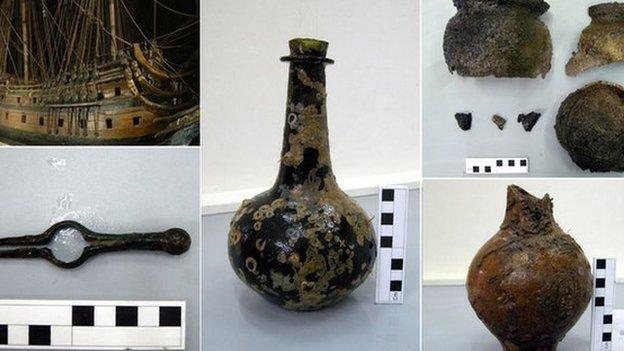
- Published27 May 2014
